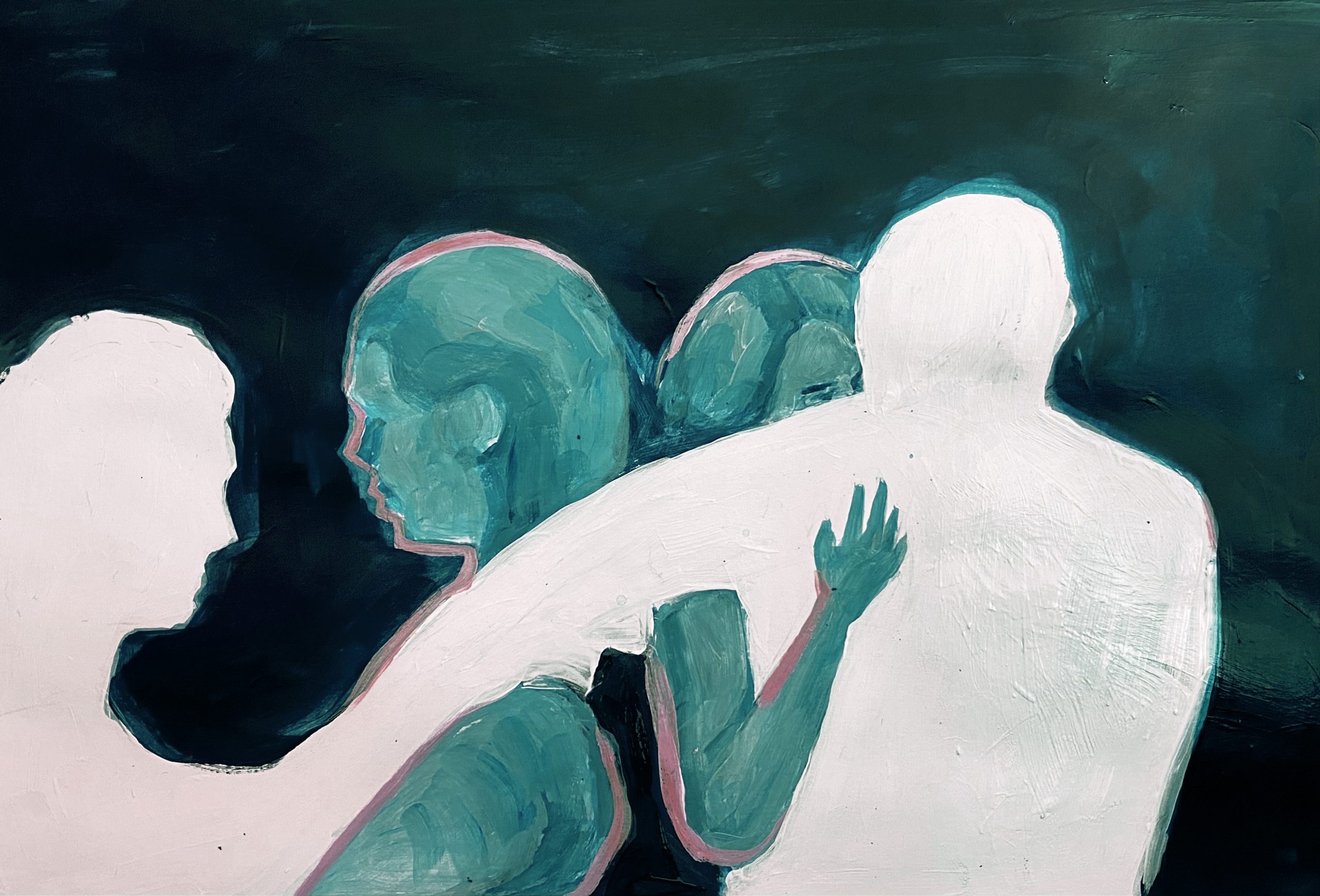
Think of the Children
“The mechanisms of moral panic…lead to the emergence of an imaginary solution – in tougher laws, moral isolation, a symbolic court action…its victims left to endure the new proscriptions, social climate and legal penalties.” Jeffrey Weeks, 1985
Those who have transgender people in their lives will know about Bell v. Tavistock. A seminal case in transgender medicolegal rights, it centered on the administration of ‘hormone blockers’ to under 18s at NHS Tavistock’s Gender Identity Development Service (GIDS). Keira Bell, the claimant in this case, in an interview with The Guardian stipulated that, by sometimes prescribing these blockers after several appointments spanning at least a year, GIDS pushed the concept of Gillick competence (defined in law as the capacity for those under 16 to consent to medical treatment without parental permission) “to its breaking point.” This decision was undoubtedly influenced by her own detransition and previous treatment by GIDS. It was said that the “misleading” information given to children meant they could not fully consent to treatment because they were not aware of its “full effects”. After months of deliberation, the December 2020 judgment ruled in favour of Bell: sixteen and seventeen year-olds must prove their mental clarity and win a court order to receive treatment while under-sixteens are entitled to nothing.
As a young trans person myself, this case is not a debate. This is my life and I don’t have the privilege of being able to take a side. Bell does not represent the diversity of transgender children and their experiences. Trans children have been forced into being their only medical advocates against an uncaring nation, a nation that actively denies us life-saving treatment. The aftermath of Bell v. Tavistock has forced me, a fierce critic of GIDS, into defending them because the alternative is neglect. With the current flurry of trans discourse, most people will know about the horrific wait times to access services, the years it takes to get a first appointment, the further time it takes to qualify for medical help. What is less widely discussed are the appointments themselves. Aged sixteen at my first GIDS appointment – which I only got so quickly because of a serious suicide attempt – the psychologist watched me cry when she stated I was unlikely to get hormone blockers before my nineteenth birthday. I was then asked for explicit details about my sex life, masturbatory habits and the intimate relationship with my body – a sixteen year-old, sat with his mum, interrogated by a stranger. I’ve been dehumanised by GIDS for half a decade. In sharing my personal history, my aim is to show how Bell v. Tavistock is between a rock and a hard place: trans children pick between dehumanisation or neglect. Tavistock failed me, it has failed others, and it needs urgent restructuring – but I also know that shutting down operations entirely is the most destructive thing one can do. In the wake of this case, young trans people are begging for the return of the barest minimum.
Much has already been written about this case – in particular, how it twists the narratives of trans peoples’ lived experiences. A 2020 study by University College London study showed that only 2% of children treated with hormone blockers decided not to progress to hormone therapy. 98% of children go on to further treatments, feeling more secure in their trans identity and in themselves. Yet the BBC misconstrued this as evidence of children being forced onto a clinical pathway that they are too naïve to stray from. The 98% of children progressing on to hormone therapy are portrayed as failures – proof that GIDS forces medication onto unwitting children. It is impossible to convey how frustrating this is: if this were any other treatment, hormone blockers would be celebrated for its 98% success rate. But it isn’t, because trans children becoming adults is considered problematic, and the transgender child cannot receive positive media coverage. Whilst this frustration has been readily explored and documented, there has been scant analysis on how the focus on children affects the manner in which this case is reported. Underlying Bell v. Tavistock is a disgust that no one was protecting children from this new ‘gender ideology’; the child is an inactive agent that the trans bogeyman preys on.
In 1985, Jeffrey Weeks – influential gay academic and a personal favourite historian – noted the cyclical nature of moral panics during the AIDS crisis: every generation has its folk devil, posing a threat to civilised society with its evil intent, and this pattern repeats ad nauseum. Beginning with the problematic construction of the ‘child’ to the paradoxical conclusion of enforced court action, and finishing with Trans Exclusionary Radical Feminists (TERFs), children have been used as emotive propaganda in the trans moral panic. Because these tactics are not new and will be used again, it is imperative to recognise them. Bell v. Tavistock is symptomatic of the current anti-trans moral panic which weaponises childhood innocence as justification for pathologising, policing and controlling queer individuals.
The December 2020 judgment dedicates itself to preserving childhood naivety to the point where the transgender child’s psychological wellbeing is considered expendable. Statements from “highly vulnerable” children undergoing “considerable distress” because of gender dysphoria are not convincing enough when compared to the long-term effects it could have on their fertility and sex life. The child’s fertility is valued more highly than the child themselves. This case is a perverse paradox: it is deemed necessary to legally dissect the genitalia and future reproductive capacity of transgender children to ensure their continued innocence. While giving evidence, American psychiatrist, Professor Stephen Levine states that young people mature through “social and personal experiences.” Accordingly, hormone blockers force children to “miss a period of normal biological and social experience […] that can never be truly recovered or reversed.” He paints the child on hormone blockers as spiritually bereft – even unhuman – for failing to develop “correctly” The hormone blocker interferes with a predestined, natural childhood. This argument is unspeakably dangerous. It pathologises the trans child as inherently broken, discredits transgender adults formerly prescribed this treatment as developmentally stunted, and flirts with eugenic concepts of ‘normal’ and ‘abnormal’ child-raising. This framing of transgender people excludes them from the ‘normal’ population, constructing them as freakish, dangerous, even threatening – they need to be controlled. By not challenging the testimony, the judgment proudly shows that it values children’s reproductive organs over the children themselves. The trans child is thrown against court walls and abandoned while the very architects of this violence celebrate – they have protected the fool from themselves.
There is the illusion of a better deal for sixteen to eighteen year-olds. The judgment ruled that they can apply, fight, and win long court battles to receive timely treatment. Older children are given the opportunity to beg the same courts that abandoned the young for crumbs. This is the decision, despite open acknowledgment of such court action as an “intrusion on the child’s autonomy.” And yet, their argument rests on the belief that removing hormone blockers restores autonomy to the child and protects their imagined futures. The choice to settle for a decision that openly states its insufficiency in protecting children’s autonomy proves it was never about protecting the best interests of children – it was about controlling their identities. A young person on hormone blockers is considered more destructive than the act of forcing that same child through the court system is. The judgment is self-aware of its flaws yet cannot see another alternative. It reads like a foreshadowing of failure, as if the mere acknowledgment of risk is enough to hide behind when, inevitably, it emerges that this judgment harmed the mental and physical wellbeing of children. Here lies the paradox of this entire case. The motive is, supposedly, to protect children’s innocence, yet children are constantly referred to as inevitable collateral damage. A child killing themselves because of this medical abandonment is more palatable to the judges than that same child on medication. Acknowledgement without action is not good enough. Transgender children can no longer be viewed as expendable.
That is the situation as I see it: ideas of childhood valued over lived experience. But when discussing Bell v. Tavistock you cannot just talk about the judgment: the cultural impact has been unavoidable, warping public perception of trans children and what they actually go through. This has created an atmosphere so toxic that an SNP minister attempted to remove “criticism of transgender identity” from the Hate Crime Bill. Trans people, children and adults alike, are seen as a threat. Bell v. Tavistock has been reported without including the voices of those it attacks, and the impact of that reporting has greatly worsened social attitudes towards transgender children. The case has stoked the fires of TERFs: a small, but very vocal minority who view the existence of trans people – trans women in particular – as a threat to cisgender women. I have rewritten this point on TERFs so many times: I have poured through misinformation, fearmongering, bigotry and seen how their arguments draw society’s focus away from transgender children. I will not spend any more time reconstructing the arguments of bigots. TERFs are not feminists – their main priority is not to liberate women but to remove the trans community. Bell v. Tavistock is thus the perfect attack point for them. Attacks on the child lay the entire transgender community open, and the fanatical hatred against trans children legitimises hostile attacks seeking eradication of all trans people. Most recently, the government reworded gender neutral terminology around pregnancy to deliberately exclude trans and non-binary parents: these government restrictions are made possible by the vitriol of anti-trans activists. They are complicit. The transgender child’s body is the battleground for a manufactured culture war, violated by judges in the courtroom and TERFs in national newspapers.
Jeffrey Weeks demarcated the birth, life, and death of moral panics back in 1985. The same structure is seen today. The symbolic court action of Bell v. Tavistock, the imaginary solution of revoking medical care, and the “victims left” to attempt to survive in an increasingly hostile country demonstrate how transgender children are continually prevented from speaking. Children’s rights cannot be subject to public opinion, and their voices must be amplified. Bell v. Tavistock is just the beginning of the battle against transgender children. Already, Keira Bell has called for a medical model which “reconciles” gender-dysphoric children with their “birth sex” – in other words, conversion therapy. It was never the end goal to halt children’s treatment: the goal is instead the complete denial of trans people altogether. The pace at which trans rights are being questioned is relentless, but it is imperative to realise how trans children are played as pawns in this hyper-emotive rhetoric, used to disguise transphobic ulterior motives. Transgender people cannot, and will not, be excised from society. ∎
[separator type=”thin”]
Further reading
- P. Hier, ‘Risk and Panic in Late Modernity: Implications of the Converging Sites of Anxiety’ British Journal of Sociology 54.1 (2003)
- Meyer, ‘The Moral Rhetoric of Childhood’ Childhood 14.1 (2007)
- Robinson, ‘In the name of childhood innocence: An exploration of the moral panic associated with children and sexuality’ Cultural Studies Review 14.2 (2008)
- Weeks, Sexuality and its discontents (1985)
Words by Eliott Rose. Art by Joseph Dobbyn.







